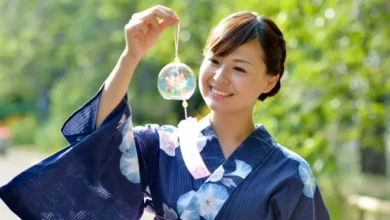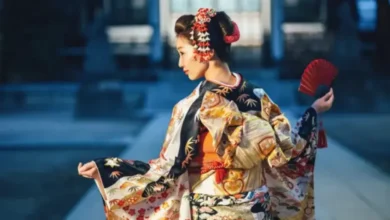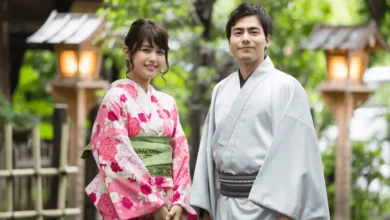What is Haori? A Brief Overview
The haori is a quintessential part of traditional Japanese clothing, designed to be worn over a kimono. This lightweight jacket combines aesthetic beauty with practicality, serving as both a functional outer layer and a symbol of cultural identity. Typically worn by men and women, haori styles and uses have evolved over centuries while retaining their charm and grace.
Origins of the Haori
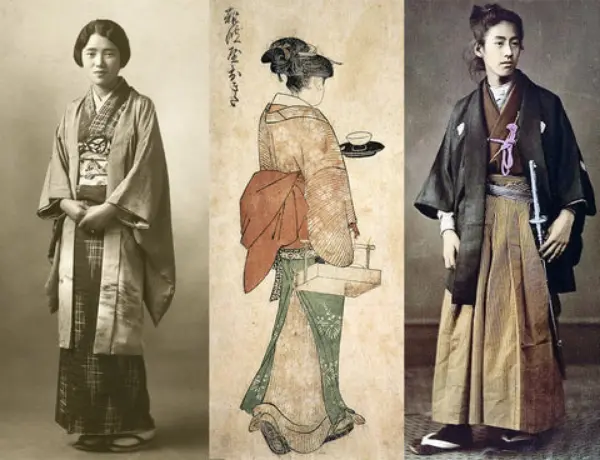
The Birth of the Haori in the Sengoku Period
The haori dates back to Japan’s Sengoku period (1467–1615). Initially, it was a functional garment used by samurai warriors to protect against the elements. Its loose fit allowed freedom of movement while providing warmth.
Transition to Fashion and Tradition
During the Edo period (1603–1868), the haori transformed into a fashionable item. The rise of the merchant class brought an emphasis on style, and haori designs became more intricate, showcasing patterns, family crests, and high-quality fabrics.
The Structure of a Haori
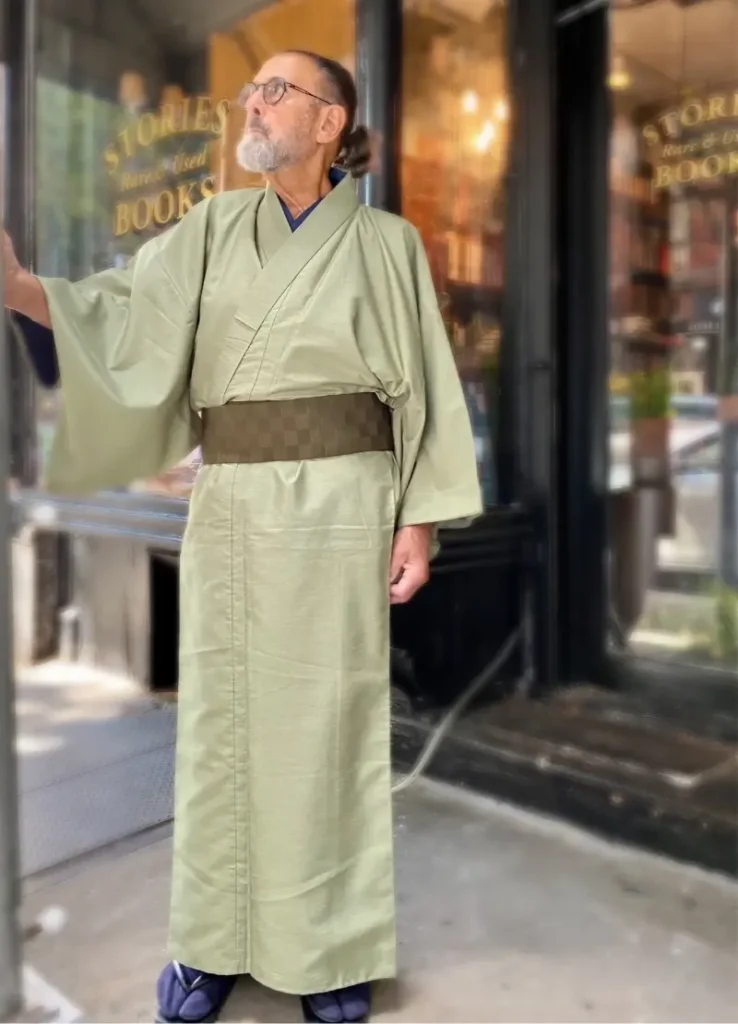
Unique Design Features
- Length and Fit: The haori is shorter than a kimono, typically falling around the hips or thighs.
- Open Front: It is worn open or loosely tied with small cords called himo, giving it a relaxed yet elegant appearance.
- Sleeves: The sleeves are wide and flowy, resembling those of a kimono but slightly more compact.
Material Choices
Haori are crafted from various materials such as:
See also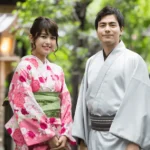 Traditional Clothing in Japan
Traditional Clothing in Japan
- Silk: Known for its luxurious texture and intricate patterns.
- Cotton: Popular for casual wear due to its lightweight and breathable nature.
- Synthetic Fabrics: Modern haori often use polyester for durability and affordability.
The Symbolism Behind Haori Patterns
Japanese culture is rich with symbolism, and the patterns on haori often carry significant meanings. Some common motifs include:
- Cranes: Representing longevity and good fortune.
- Waves: Signifying resilience and strength.
- Cherry Blossoms: A symbol of the fleeting beauty of life.
When to Wear a Haori
Formal Occasions
The haori is an essential part of formal attire in events such as weddings, tea ceremonies, and traditional festivals. Its designs are more elaborate, with detailed embroidery and rich fabrics.
Casual and Modern Usage
In contemporary Japan, the haori has become a versatile piece. People pair it with jeans, skirts, or even dresses, blending traditional and modern fashion.
The Evolution of Haori in Japanese History
Haori and the Samurai Class
During the Edo period, haori jackets were used by samurai as symbols of status. The back of the haori often bore the kamon (family crest), indicating loyalty and heritage.
See also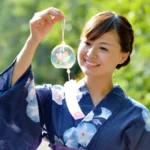 Traditional Japanese Clothing: Yukata
Traditional Japanese Clothing: Yukata
Influence of Westernization in the Meiji Era
The Meiji Restoration (1868–1912) marked a significant cultural shift as Western-style clothing gained popularity. Despite this, the haori remained a cherished garment for ceremonies and traditional events.
Post-War Revival
After World War II, the haori experienced a resurgence as a symbol of Japanese identity. It gained attention worldwide, influencing global fashion trends.
Types of Haori
Men’s Haori
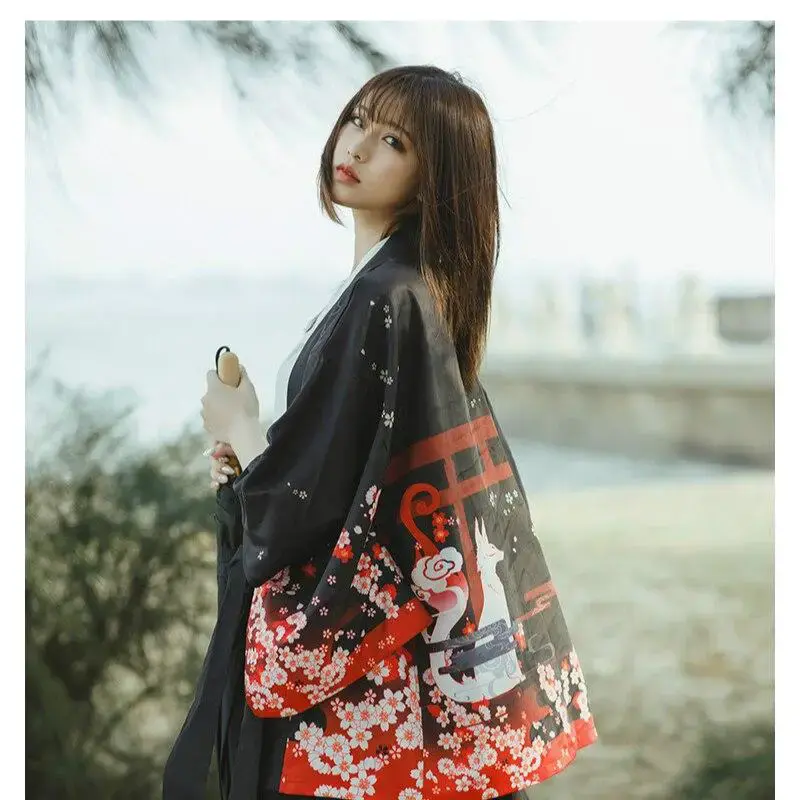
Men’s haori are generally simpler in design, often featuring dark, solid colors or subtle patterns. They emphasize masculinity and elegance.
Women’s Haori
Women’s haori are vibrant and richly decorated. Common features include floral patterns, bright colors, and intricate embroidery.
Children’s Haori
Children’s haori are often worn during traditional festivals like Shichi-Go-San, featuring playful designs and cheerful colors.
How to Style a Haori
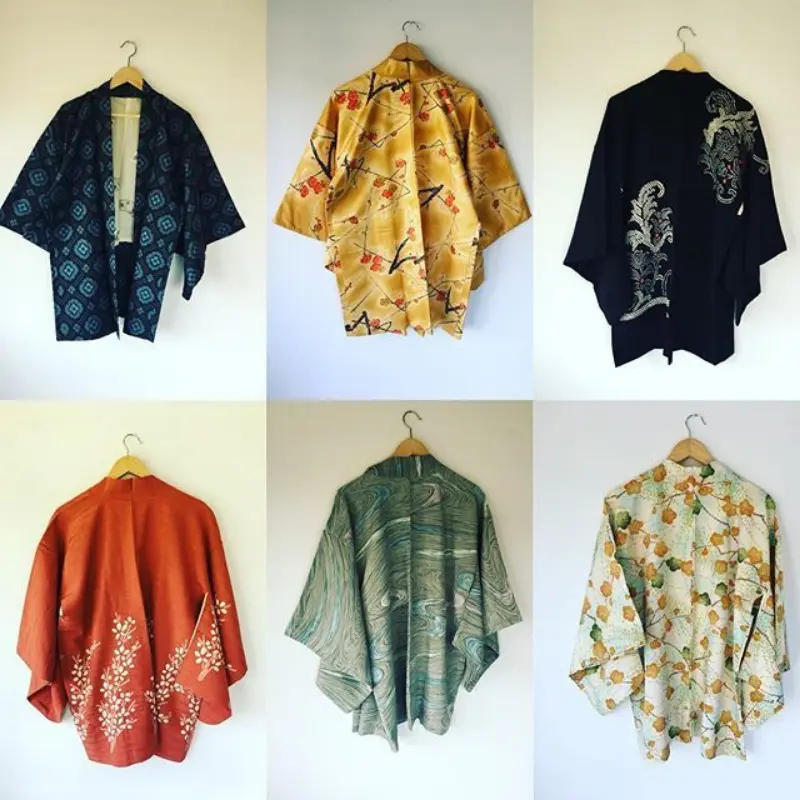
Traditional Styling
Traditionally, a haori is worn over a kimono, with the himo tied loosely at the chest. The ensemble is completed with accessories like obi sashes and geta sandals.
Modern Adaptations
In modern fashion, haori jackets are paired with casual outfits. They can be worn over a simple T-shirt and jeans or styled as a statement piece with skirts and dresses.
Craftsmanship: The Art of Making a Haori
Traditional Dyeing Techniques
Many haori feature patterns created through shibori dyeing, a labor-intensive process involving intricate folding and binding of the fabric.
Hand-Painted Designs
Artisans often paint detailed motifs directly onto the silk, ensuring each haori is unique.
The Role of Tailoring
Crafting a haori requires meticulous tailoring to ensure the perfect fit and flow of the fabric. This process highlights the garment’s cultural significance.
The Haori in Popular Culture
Film and Television
Haori have been prominently featured in Japanese period dramas, where they signify the character’s social status or role.
Global Fashion Influence
The haori has inspired international designers, leading to its incorporation into haute couture collections.
Caring for Your Haori
Cleaning and Maintenance
- Hand-Washing: Use a gentle detergent and cold water for silk haori.
- Storage: Store flat or hang on padded hangers to maintain the garment’s shape.
- Avoid Sunlight: Prolonged exposure can fade the fabric and damage the intricate patterns.
Restoring Vintage Haori
Professional services specializing in kimono restoration can revive antique haori, preserving their beauty and history.
Modern Haori Trends
Sustainable Fashion
Many modern haori are created using eco-friendly fabrics and practices, aligning with global sustainability efforts.
Gender-Neutral Designs
The rise of gender-neutral fashion has led to the creation of unisex haori styles, blending traditional aesthetics with contemporary tastes.
Customization
Modern customers can personalize their haori with unique patterns, embroidery, and colors, making each piece one-of-a-kind.
Why the Haori Endures
Cultural Pride
The haori serves as a powerful symbol of Japanese heritage, representing centuries of tradition and artistry.
Versatility
Its ability to adapt to modern fashion trends while retaining its traditional essence ensures its continued relevance.
Global Appeal
As more people embrace Japanese culture, the haori has found a place in wardrobes worldwide, transcending borders and time.
Explore the World of Haori
Whether worn as a fashion statement or a cultural emblem, the haori embodies the timeless elegance of Japanese tradition. Its intricate designs, rich history, and versatility make it a treasured garment that continues to captivate people around the globe.
Embrace the beauty of haori and let it inspire your personal style—a perfect blend of tradition and modernity!
